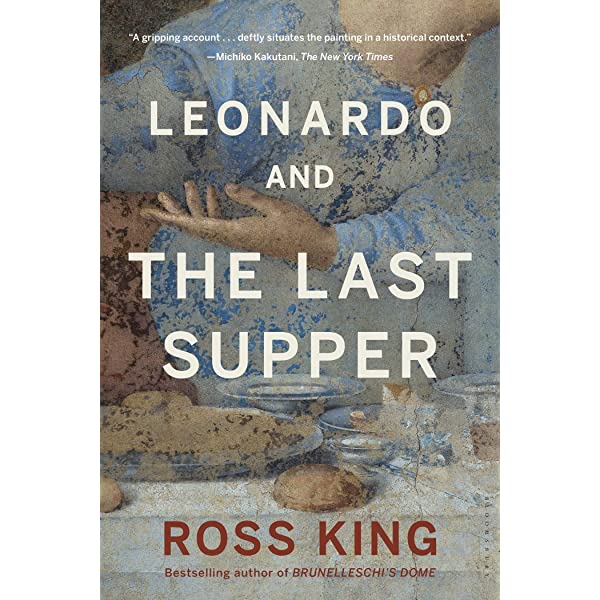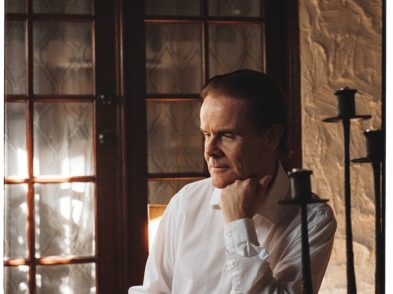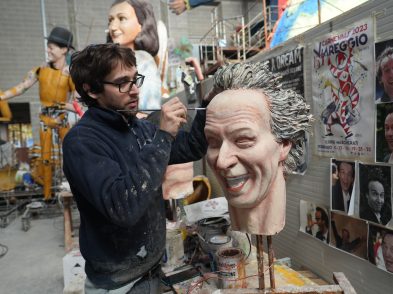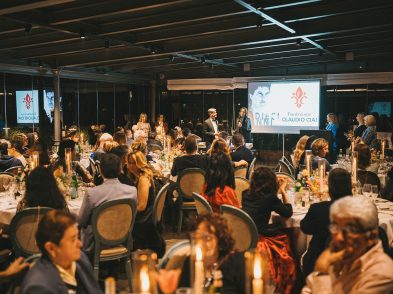Say the name Ross King and you immediately think of Brunelleschi’s Dome, the Canada-born author’s bestseller dating to the turn of the millennium. A resident of Woodstock, England, King is a regular visitor to Florence, where he deepens his studies of the Renaissance and leads lectures. Over a 30-year career, his pen has also focused on Michelangelo, Leonardo, Machiavelli and, more recently, the little-known bookseller Vespasiano da Bisticci.
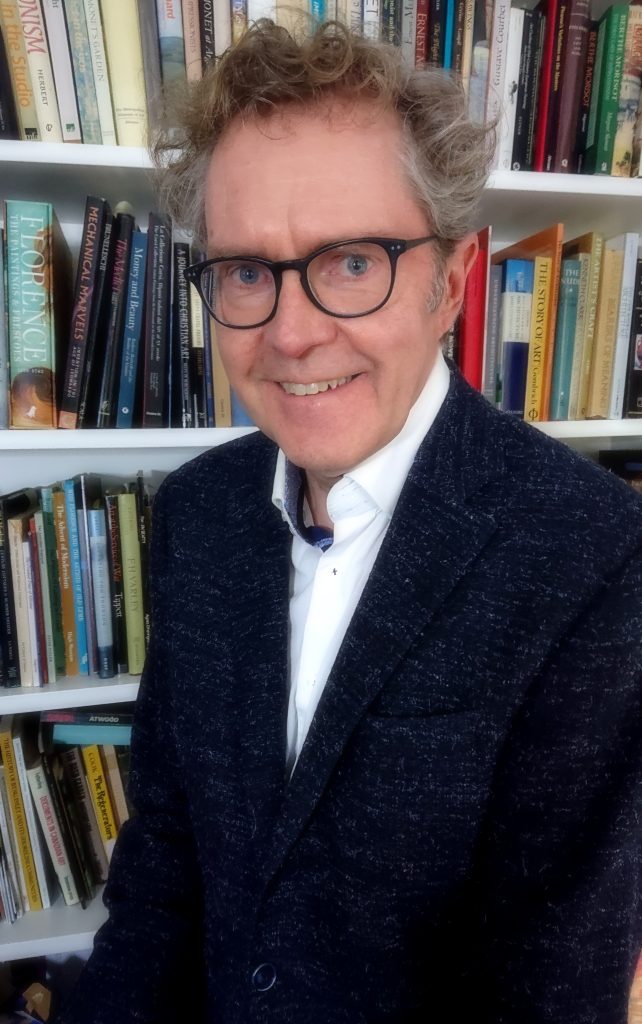
Paola Vojnovic: Florence has a special place in your heart. When did you visit the city for the first time? And what brings you to Florence now?
Ross King: I first visited Florence about 25 years ago when I came on a short holiday with two good friends. Brunelleschi’s Dome is actually dedicated to them. We stayed in a cheap but charming little hotel in via del Corso. I didn’t have a view of the dome, but on my first morning I was greeted by the sound of the bells ringing in the campanile. These days, I’m in Florence with a much bigger group (and in a somewhat more expensive hotel). I’m with a group from the Smithsonian, for whom I give talks in Italy a couple of times a year.
More than 20 years ago you began writing the book that would change your life and become an international bestseller: Brunelleschi’s Dome. How did that book come about?
I vividly recall climbing to the top of the dome on that first visit and wondering how on earth it was built and why it didn’t collapse. The lantern is massive and sits on top of a void. Plus, everything was hauled to such a great height—the height of the Statue of Liberty—without the aid of hydraulic lifting equipment. No building had ever intrigued me as much. I wanted to find out more, but soon discovered that the only two options were either massive, technical monographs on Brunelleschi by distinguished architectural historians or a paragraph or two in the guidebooks. I decided that there had to be something in between that would be intelligible and of interest to people like me.
Since Brunelleschi’s Dome, you have written so much on the subject of Renaissance, with books such as Leonardo and the Last Supper, Michelangelo and the Pope’s Ceiling, and Machiavelli: Philosopher of Power. According to the Financial Times, you “tell a familiar story as though it had never been told before” and your research is impeccable. How do you achieve that? What does your day look like when you start researching a new book?
I love doing research, both on the ground and in libraries and archives. That usually takes about 18 months or two years, and I often end up with 400,000 words of notes. Since the books have to be considerably shorter, I need to pick and choose! But I feel that nothing is ever wasted. As for my day, it starts early: I usually wake up before 6am these mornings. When I’m at home, I work in a small, book-lined studio I built in my back garden almost 20 years ago.
Tell us a bit about your Florence: The Paintings & Frescoes, which is the most comprehensive book ever undertaken on the art of Florence.
I was approached to write the introduction for a beautiful book published by Black Dog & Leventhal on the paintings in the Vatican Museums. They then asked me if I would write the text for a book they were planning on all of the paintings and frescoes in Florence. It was a bit of a daunting task, but I couldn’t resist saying yes. It’s the only book in which I’ve ever had a co-author, Anja Grebe. I think the two of us did a good job of distilling some 500 years of painting into one book—even if it is a superheavyweight volume. I always warn people not to drop it on their feet.

If I had to choose, my personal favorite would be your latest book, The Bookseller of Florence. I fell in love with Vespasiano da Bisticci the first time I read his Lives of Illustrious Men of the XV Century for one of my graduate classes at Syracuse University. What made Vespasiano so extraordinary? Or was he simply the product of his time?
Vespasiano was indeed a remarkable character—one of those people who, it seems, could only have existed and flourished in 15th-century Florence. He was clearly someone of extraordinary charm and intelligence, two things he parlayed into a career as Europe’s most expert and prolific producer of deluxe manuscripts. But his manuscripts were more than just gorgeous treasures. He had a great passion for knowledge and a desire to spread it widely in order to make a better world. I also admire his pluck: he was a fatherless boy who started work at the age of 11 and soon became the friend and adviser of people such as Cosimo de’ Medici and the King of Naples.
When we think of the Renaissance, we think of you. But in reality, you have also written about many modern subjects, even outside of the borders of Italy. What sparked your interest in Monet and what is hidden behind his peaceful paintings of waterlilies, which made him one of the most popular artists of his time?
French art of the nineteenth and early twentieth centuries—Impressionism and Post-Impressionism—is another of my passions. I love how art and history intersect, and they come together beautifully in Monet. With Mad Enchantment, I wanted to tell the full story of these beautiful, peaceful paintings, and to show how they were actually created by someone struggling with difficult personal problems—his beloved wife had died and his sight was failing—during the horrors of the First World War. They are an emblem of how beauty can come from tragedy.
Was Defiant Spirits: The Modernist Revolution of the Group of Seven a nod to your Canadian origins?
As a Canadian, I grew up with the Group of Seven, Post-Impressionist painters who came together in Toronto after the First World War. They are part of my cultural DNA, you could say. I was made a tempting offer: write a book and curate an exhibition about their lives and work. It was a wonderful experience that took me out of libraries and into the Canadian backwoods and waterways.
I know that a new book on the history of Italy is keeping you busy these days. What time span will it encompass? What is the biggest challenge when you face such a broad topic?
I was commissioned to write a “short” history of Italy for a publisher, but Italy is so fascinating that I had tremendous difficulty keeping things brief. So, the project expanded into two books: one on Ancient Italy and the other on Italy since the Fall of the Roman Empire. Most of my books only cover a few years in the lives of a couple of people, so covering 3,000 years of history has been a bit of a challenge for me!
Let’s go back to the Renaissance. What can we learn from the 15th-century Renaissance and what are the three things we can implement in our lives today?
First of all, optimism and self-belief. The Florentines came to believe they could do anything, especially after Brunelleschi demonstrated the art of the possible by constructing the dome, and after Michelangelo tackled the “cursed” block of marble to create the David. Secondly, their sense of curiosity and pushing the boundaries of the known world. They were interested in everything, from the structure of the human body to the dimensions of the earth and the composition of the heavens. They decided that the world was a wondrous place and they wanted to know more about it. Finally, the sense of perfectability. They had the idea that we, as humans, possess the amazing capacity to change and evolve, to become better people, and to create a better world. That’s something for all of us to work on.


